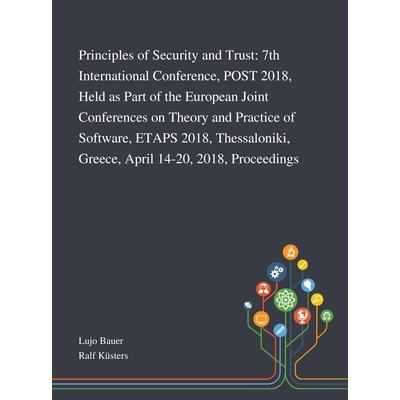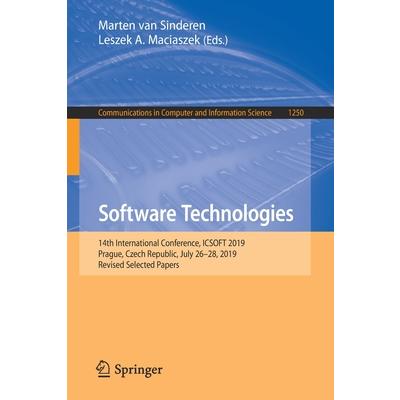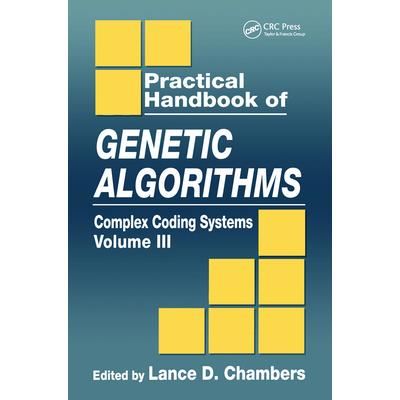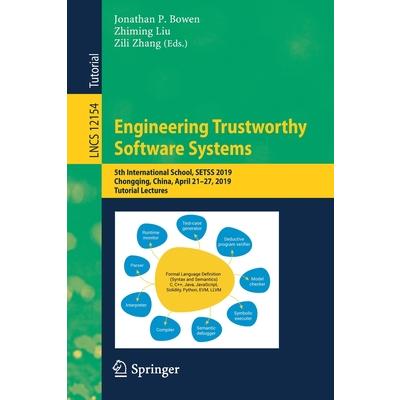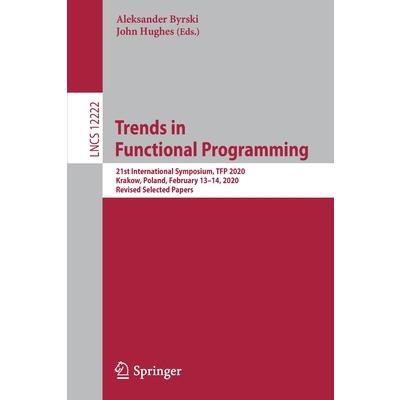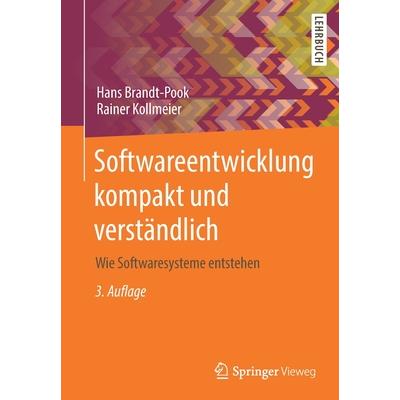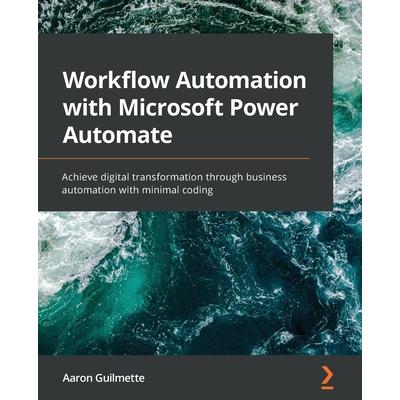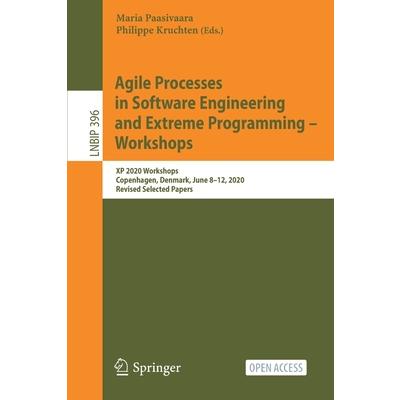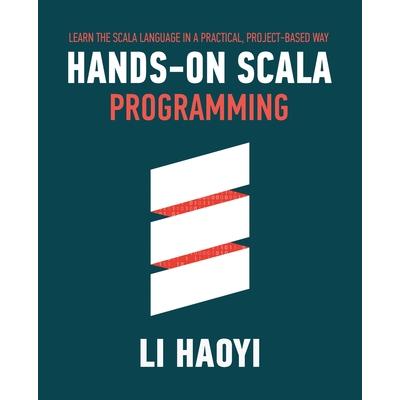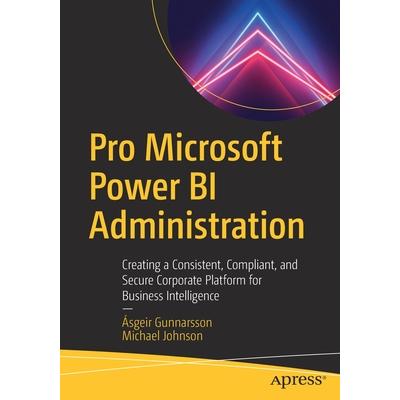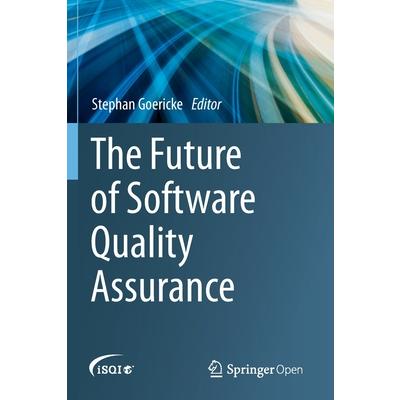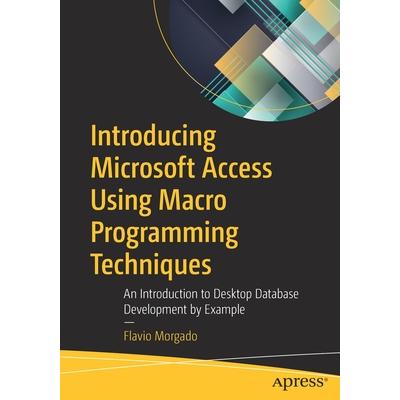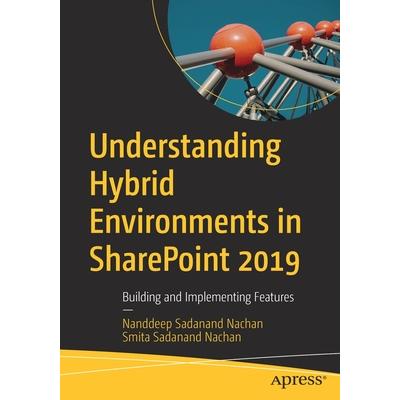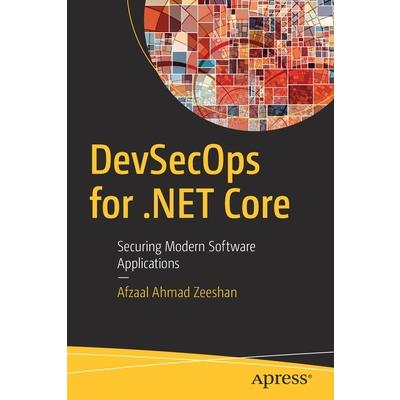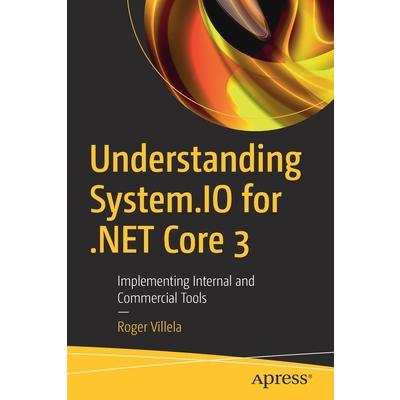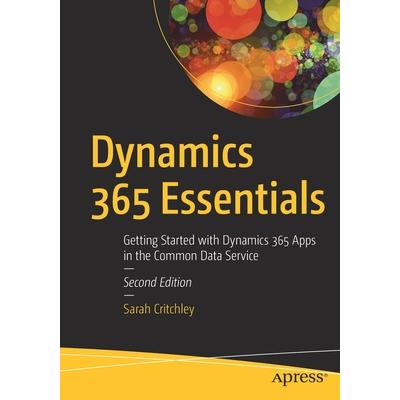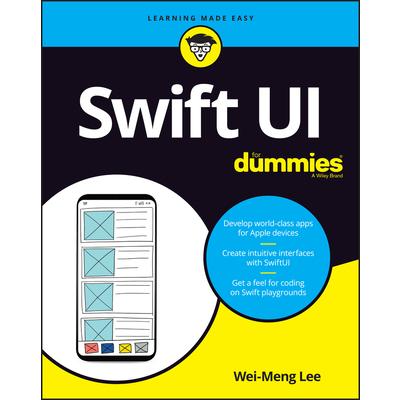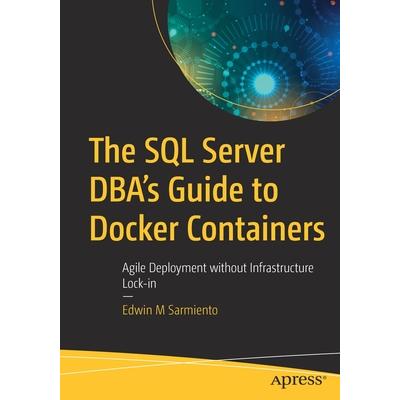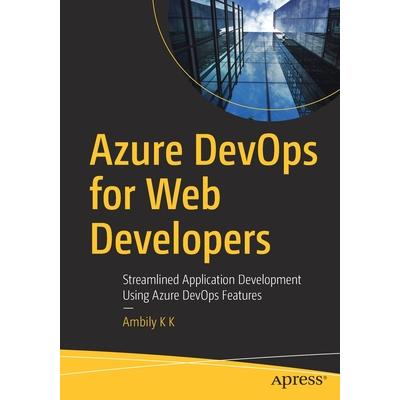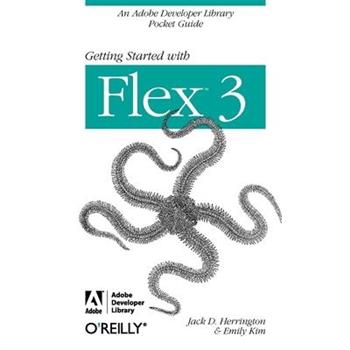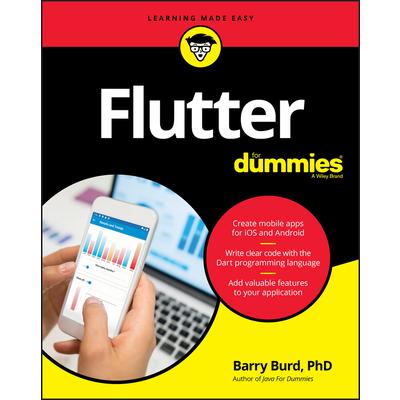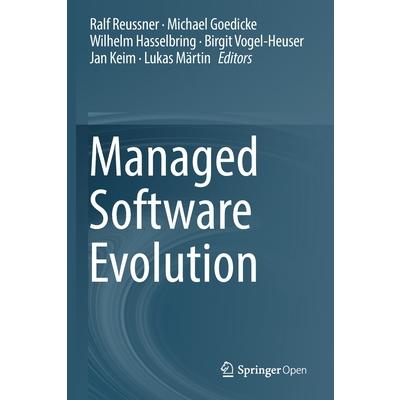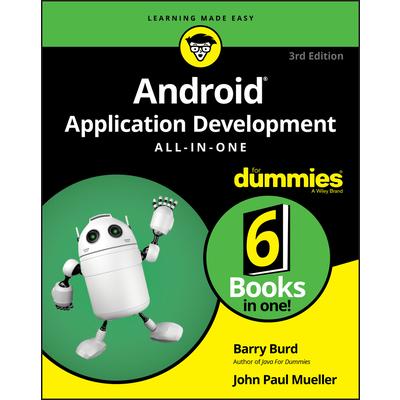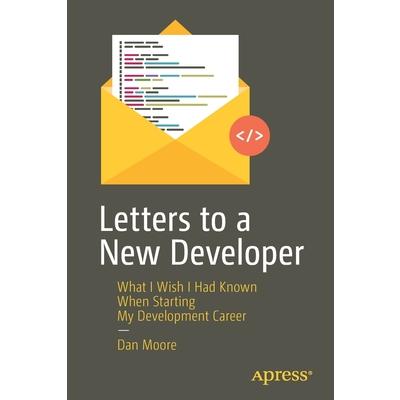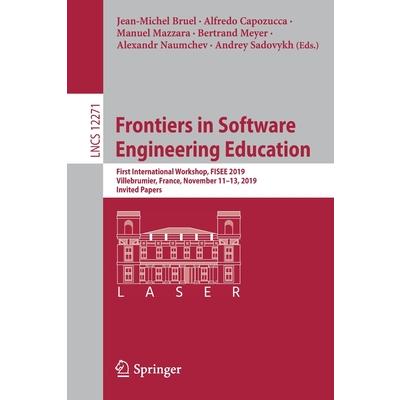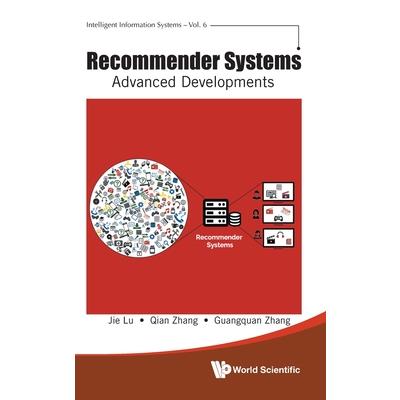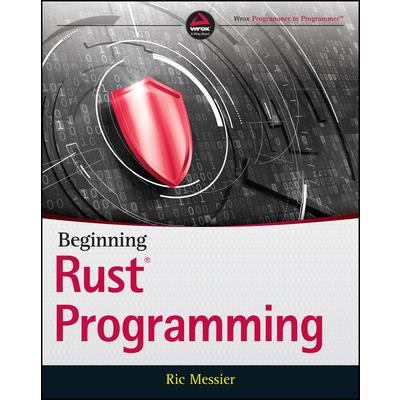Principles of Security and Trust
This book constitutes the proceedings of the 7th International Conference on Principles of Security and Trust, POST 2018, which took place in Thessaloniki, Greece, in April 2018, held as part of the European Joint Conference on Theory and Practice of Software, ETAPS 2018.The 13 papers presented in this volume were carefully reviewed and selected from 45 submissions. The papers are organized in topical sections named: information flow and non-intereference; leakage, information flow, and protocols; smart contracts and privacy; firewalls and attack-defense trees. This work was published by Saint Philip Street Press pursuant to a Creative Commons license permitting commercial use. All rights not granted by the work's license are retained by the author or authors.
Python Programming
Why Python has been proclaimed by the most Professional Techs as the best Scripting Language ? Do you want to learn Coding from scratch? This Book is probably what you looking for . Keep reading to discover more about it! Python is presumably the easiest-to-learn and nicest-to-use programming language in widespread use. Python code is clear to read and write, and it is short without being cryptic. It is a very powerful language, which means that we can generally write far fewer lines of Python code than would be needed for an equivalent application written in, say, C++ or Java.Python is typically typed in an implicit and dynamic format; hence, there is no requirement to declare variables. These types are enforced, and the variables are sensitive to cases. There is no definite array of characters used to terminate statements in Python. Any statement which expects a level of indentation is concluded using a colon sign. Multiple variables can also be used on a single line.This book covers the following topics: The 7 main Features of PythonWhy you should use PythonWhat is the best Python web app framework and whyData Types in PythonConditional StatementsWhy is Python so popular in Machine Learning...And much more!In Python Programming, the English language is mainly used in coding many keywords. The mastery of these keywords means knowledge of the fundamental aspects of python programming.However, before delving into these primary keywords, you have to understand the basic concepts associated with Python. These concepts are necessary to understand every other aspect of the scripting language.By reading this book, you're off to a great start. It is designed to ease your way into Python programming world.So, Ready to Become a Master of Python? Click "Buy Now" and Get the Book!
Data Lake Analytics on Microsoft Azure
Get a 360-degree view of how the journey of data analytics solutions has evolved from monolithic data stores and enterprise data warehouses to data lakes and modern data warehouses. You willThis book includes comprehensive coverage of how: To architect data lake analytics solutions by choosing suitable technologies available on Microsoft AzureThe advent of microservices applications covering ecommerce or modern solutions built on IoT and how real-time streaming data has completely disrupted this ecosystemThese data analytics solutions have been transformed from solely understanding the trends from historical data to building predictions by infusing machine learning technologies into the solutionsData platform professionals who have been working on relational data stores, non-relational data stores, and big data technologies will find the content in this book useful. The book also can help you start your journey into the data engineer world as it provides an overview of advanced data analytics and touches on data science concepts and various artificial intelligence and machine learning technologies available on Microsoft Azure.What Will You LearnYou will understand the: Concepts of data lake analytics, the modern data warehouse, and advanced data analyticsArchitecture patterns of the modern data warehouse and advanced data analytics solutionsPhases--such as Data Ingestion, Store, Prep and Train, and Model and Serve--of data analytics solutions and technology choices available on Azure under each phaseIn-depth coverage of real-time and batch mode data analytics solutions architectureVarious managed services available on Azure such as Synapse analytics, event hubs, Stream analytics, CosmosDB, and managed Hadoop services such as Databricks and HDInsightWho This Book Is For Data platform professionals, database architects, engineers, and solution architects
Data Structures and Advanced Algorithms
The purpose of this book is to teach you, a budding programmer, basics of Object-Oriented Programming, data structures, and advanced algorithms using Python version 3.8. Unlike many books currently on the market, a background in math is not required to read and understand this book as the data structures and concepts will be explained in simple terms.
Search-Based Software Engineering
This book constitutes the refereed proceedings of the 12th International Symposium on Search-Based Software Engineering, SSBSE 2020, held in Bari, Italy, in October 2020. The 13 research papers and 5 short papers presented together with 1 keynote were carefully reviewed and selected from 34 submissions. SBSE is a research area focused on the formulation of software engineering problems as search problems, and the subsequent use of complex heuristic techniques to attain optimal solutions to such problems. A wealth of engineering challenges - from test generation, to design refactoring, to process organization - can be solved efficiently through the application of automated optimization techniques. SBSE is a growing field - sitting at the crossroads between AI, machine learning, and software engineering - and SBSE techniques have begun to attain human-competitive results. Due to the Corona pandemic SSBSE 2020 was held as a virtual event.
Reach Zero Defects In Your Software Empirical Study
The book will help you to produce better Software-QualitySoftware defect prevention and software quality have been constantly improved over the past years, e.g. by applying various methods and measures and using modern programming languages.As the complexity and the scale of the software (SW) that has to designed are continually growing, it is necessary for the software quality to keep in step with this development. However, keeping in step is not enough because software applications are used more and more in security-related areas where e.g. human lives are at risk.One aspect of a further optimization of SW quality therefore is the determination of the success criteria that lead to a further prevention of errors. This prevention of software errors is especially important in the initial phases of software development.The following text therefore shows the essential success criteria for reducing errors and consequently further improving SW quality. The author determined these success criteria in an extensive analysis, e.g. by thorough review of relevant literature, results of congresses on SW quality, interviews and considerable own professional experience.In the interviews with 18 experts in 3 countries, the determined success criteria were assessed regarding their importance, effectiveness and degree of networking. The results are shown in various figures and also explained.Other analyses of the success criteria will be / have already been published by the author on Amazon.com/.de.The assessment of the success criteria enables the reader and user of these criteria to set the right priorities for the optimization of SW quality during software development.
Software Technologies
This book constitutes the thoroughly refereed post-conference proceedings of the 14th International Conference on Software Technologies, ICSOFT 2019, held in Prague, Czech Republic, in July 2019.The 10 revised full papers were carefully reviewed and selected from 116 submissions. The topics covered in the papers include: business process modelling, IT service management, interoperability and service-oriented architecture, project management software, scheduling and estimating, software metrics, requirements elicitation and specification, software and systems integration, etc.
Practical Handbook of Genetic AlgorithmsComplex Coding Systems, Volume III
Practical Handbook of Genetic Algorithms, Volume 3: Complex Coding Systems contains computer-code examples for the development of genetic algorithm systems - compiling them from an array of practitioners in the field.Each contribution of this singular resource includes: unique code segments documentation description of the operations performed rationale for the chosen approach problems the code overcomes or addressesPractical Handbook of Genetic Algorithms, Volume 3: Complex Coding Systems complements the first two volumes in the series by offering examples of computer code. The first two volumes dealt with new research and an overview of the types of applications that could be taken with GAs. This volume differs from its predecessors by specifically concentrating on specific functions in genetic algorithms, serving as the only compilation of useful and usable computer code in the field.
Engineering Trustworthy Software Systems
This book constitutes the refereed proceedings of the 5th International School on Engineering Trustworthy Software Systems, SETSS 2019, held in Chongqing, China, in April 2019.The five chapters in this volume provide lectures on leading-edge research in methods and tools for use in computer system engineering. The topics covered in these chapter include Seamless Model-based System Development: Foundations; From Bounded Reachability Analysis of Linear Hybrid Automata to Verification of Industrial CPS and IoT; Weakest Preexpectation Semantics for Bayesian Inference: Conditioning, Continuous Distributions and Divergence; K - A Semantic Framework for Programming Languages and Formal Analysis Tools; and Software Abstractions and Human-Cyber-Physical Systems Architecture Modelling.
Trends in Functional Programming
This book constitutes revised selected papers from the 21st International Symposium on Trends in Functional Programming, TFP 2020, which was held in Krakow, Poland, during February 13-14, 2020. The 11 full papers presented in this volume were carefully reviewed and selected from 22 submissions. They were organized in topical sections named: domain-specific languages; debugging and testing; reasoning and effects; and parallelism.
Softwareentwicklung Kompakt Und Verst瓣ndlichWie Softwaresysteme Entstehen
Dieses Buch erkl瓣rt in der dritten verbesserten Auflage, wie IT-Projekte ablaufen: Von der ersten Idee bis zum Betrieb des fertigen Systems wird der gesamte Prozess dargestellt. Schritt f羹r Schritt zeigen die Autoren bew瓣hrte und moderne Methoden und Techniken.Das Buch richtet sich an (Lern-)Einsteiger in das Thema, die an verst瓣ndlichem Basiswissen und an praxiserprobten ?bungen interessiert sind. Es hat eine lebendige Sprache und enth瓣lt viele Anregungen zum ?ben, Weiterlesen und -denken, so dass es bestens geeignet ist f羹r Studierende der Wirtschaftsinformatik, Informatik oder Betriebswirtschaftslehre und f羹r Auszubildende der IT, FachinformatikerInnen sowie Informatikkauffrauen und -kaufm瓣nner.Das Besondere an diesem Buch ist, dass T瓣tigkeiten im Vorfeld der Programmierung und im Spannungsfeld zwischen IT-lern und Auftraggebern im Vordergrund stehen. Es bietet damit das R羹stzeug, ein eigenes Projekt durchf羹hren zu k繹nnen. Unter anderem sind die leichte Verst瓣ndlichkeit, die erprobten Ideen, die ?bungen und Erfahrungsberichte hilfreich. Auf Basis der im Buch dargestellten Ideen und Herangehensweisen sind schon viele Projekte erfolgreich von IT-Einsteigern durchgef羹hrt worden.
Workflow Automation with Microsoft Power Automate
Enhance your organization's productivity by automating repetitive tasks and simplifying business workflows using Microsoft Power Automate (formerly Microsoft Flow)Book DescriptionMicrosoft Power Automate is a workflow automation solution included in Microsoft 365. This book explores the core concepts of workflow automation, such as working with connectors, triggers, and actions, along with their practical implementation in automating business tasks and simplifying digital processes to boost enterprise productivity.Who this book is forThe book is for technologists, system administrators, and Power users with little or no Microsoft Power Automate experience. Familiarity with basic Microsoft 365 services is expected.
Beginning T-SQL
Get a performance-oriented introduction to the T-SQL language underlying the Microsoft SQL Server and Azure SQL database engines. This fourth edition is updated to include SQL Notebooks as well as up-to-date syntax and features for T-SQL on-premises and in the Azure cloud. Exercises and examples now include the WideWorldImporters database, the newest sample database from Microsoft for SQL Server. Also new in this edition is coverage of JSON from T-SQL, news about performance enhancements called Intelligent Query Processing, and an appendix on running SQL Server in a container on macOS or Linux. Beginning T-SQL starts you on the path to mastering T-SQL with an emphasis on best practices. Using the sound coding techniques taught in this book will lead to excellent performance in the queries that you write in your daily work. Important techniques such as windowing functions are covered to help you write fast-executing queries that solve real business problems.The book begins with an introduction to databases, normalization, and to setting up your learning environment. You will learn about the tools you need to use such as SQL Server Management Studio, Azure Data Studio, and SQL Notebooks. Each subsequent chapter teaches an aspect of T-SQL, building on the skills learned in previous chapters. Exercises in most chapters provide an opportunity for the hands-on practice that leads to true learning and distinguishes the competent professional. A stand-out feature in this book is that most chapters end with a Thinking About Performance section. These sections cover aspects of query performance relative to the content just presented, including the new Intelligent Query Processing features that make queries faster without changing code. They will help you avoid beginner mistakes by knowing about and thinking about performance from day 1.What You Will LearnInstall a sandboxed SQL Server instance for learningUnderstand how relational databases are designedCreate objects such as tables and stored proceduresQuery a SQL Server table Filter and order the results of a queryQuery and work with specialized data types such as XML and JSONApply modern features such as window functionsChoose correct techniques so that your queries perform wellWho This Book Is ForAnyone who wants to learn T-SQL from the beginning or improve their T-SQL skills; those who need T-SQL as an additional skill; and those who write queries such as application developers, database administrators, business intelligence developers, and data scientists. The book is also helpful for anyone who must retrieve data from a SQL Server database.
Windows 10 for the Internet of Things
Manage and control Internet-connected devices from Windows and Raspberry Pi. Master the Windows 10 IoT Core application programming interface and feature set to develop Internet of Things applications on the Raspberry Pi using your Windows and .NET programming skills. New in this edition is coverage of enterprise-level tools and features in the Windows 10 IoT Enterprise server operating system, allowing you to manage IoT solutions having large numbers of devices and to deploy applications to enterprise-grade hardware. Windows 10 for the Internet of Things presents a set of example projects covering a wide range of techniques designed specifically to jump start your own Internet of Things creativity. You'll learn everything you need to know about Windows IoT Core to develop Windows and IoT applications that run on single board computers such as the Raspberry Pi. You'll learn to develop for the Raspberry PI using native Windows and all the related programming skills that you have built up from developing desktop and mobile applications. This book provides just the help you need to get started in putting your Windows skills to use in a burgeoning new world of development for small devices that are ubiquitously connected to the Internet. What You Will LearnKnow Windows 10 on the Raspberry PiRead sensor data and control actuatorsConnect to and transmit data into the cloudRemotely control your devices from any Windows deviceDevelop IOT applications under Windows using C#, C++, and Visual BasicStore your IOT data in a database for later analysis Who This Book Is ForDevelopers and enthusiasts wanting to take their skills in Windows development and connect everyday devices to the Internet by developing for Windows 10 IoT Core. Readers learn to develop in C#, C++, and Visual Basic using Visual Studio, for deployment on devices such as the Raspberry Pi.
Easy Learning Data Structures & Algorithms C++
This book Made Easy to learn Data Structures and Algorithms. There are multiple solutions for each problem and the book is coded in C++, it comes handy as an interview and exam guide for computer scientists.All data structures are illustrated with simple examples and diagrams. Every important feature of the language is illustrated in depth by a complete programming example. Wherever necessary, picture descriptions of concepts are included to facilitate better understanding.The complexity of life, because they do not understand to simplify the complex, simple is the beginning of wisdom. From the essence of practice, this book to briefly explain the concept and vividly cultivate programming interest, you will learn it easy, fast and wel
Agile Processes in Software Engineering and Extreme Programming - Workshops
This open access book constitutes the 6 research workshops, the Agile Education and Training Track, the Doctoral Symposium, as well as a panel presented at XP 2020, the 21st International Conference on Agile Software Development, which was held during June 8-12, 2020. The conference was planned to take place at the IT University of Copenhagen, Denmark. Due to the COVID 19 pandemic, the conference was held online. In 2020, the following six workshops took place: Third International Workshop on Software-Intensive Business Eighth International Workshop on Large-Scale Agile Development Second European Symposium on Serverless Computing and Applications Second International Workshop on Agile Transformation First International Workshop on Agility with Microservices Programming Third International Workshop on Autonomous Agile Teams XP is the premier agile software development conference combining research and practice. It is a unique forum where agile researchers, practitioners, thought leaders, coaches, and trainers get together to present and discuss their most recent innovations, research results, experiences, concerns, challenges, and trends. XP conferences provide an informal environment to learn and trigger discussions and welcome both people new to agile and seasoned agile practitioners. The 31 papers presented in this volume were carefully reviewed and selected from overall 79 submissions. In addition to the 26 workshop papers, this volume also includes 2 papers from the Agile Education and Training Track and 3 papers from the Doctoral Symposium. Furthermore, the book contains a summary of a panel discussion with the topic "Covid-19's Influence on the Future of Agile".
Programming in C
This book covers C-Programming focussing on its practical side. Volume 1 deals mainly with basic data structures, algorithms and program statements. An extensive use of figures and examples help to give a clear description of concepts help the reader to gain a systematic understanding of the language.
Hands-on Scala Programming
Hands-on Scala teaches you how to use the Scala programming language in a practical, project-based fashion. This book is designed to quickly teach an existing programmer everything needed to go from "hello world" to building production applications like interactive websites, parallel web crawlers, and distributed systems in Scala. In the process you will learn how to use the Scala language to solve challenging problems in an elegant and intuitive manner.Currently 50% off the normal price (US$88) until the end of the month! E-Book versions of Hands-on Scala are available from the book's website, https: //www.handsonscala.com/
Pro Microsoft Power Bi Administration
Manage Power BI within organizations. This book helps you systematize administration as Microsoft shifts Power BI from a self-service tool to an enterprise tool. You will learn best practices for many Power BI administrator tasks. And you will know how to manage artifacts such as reports, users, work spaces, apps, and gateways. The book also provides experience-based guidance on governance, licensing, and managing capacities. Good management includes policies and procedures that can be applied consistently and even automatically across a broad user base. This book provides a strategic road map for the creation and implementation of policies and procedures that support Power BI best practices in enterprises. Effective governance depends not only on good policies, but also on the active and timely monitoring of adherence to those policies. This book helps you evaluate the tools to automate and simplify the most common administrativeand monitoring tasks, freeing up administrators to provide greater value to the organization through better user training and awareness initiatives. What You Will LearnRecognize the roles and responsibilities of the Power BI administratorManage users and their work spacesKnow when to consider using Power BI PremiumGovern your Power BI implementation and manage Power BI tenantsCreate an effective security strategy for Power BI in the enterpriseCollaborate and share consistent views of the data across all usersFollow a life cycle management strategy for rollout of dashboards and reportsCreate internal training resources backed up by accurate documentationMonitor Power BI to better understand risks and compliance manage costs, and track implementation Who This Book Is ForIT professionals tasked with maintaining their corporate Power BI environments, Power BI administrators and power users interested in rolling out Power BI more widely in their organizations, and IT governance professionals tasked with ensuring adherence to policies and regulations
The Future of Software Quality Assurance
- Change-Driven Testing. - The Next Generation Tester: Meeting the Challenges of a Changing IT World. - Testing in DevOps. - The Tester Skills Program. - Testing Autonomous Systems. - Testing in the Digital Age. - Measure Twice, Cut Once: Acceptance Testing. - Distributed Testing Teams. - Testing Strategies in an Agile Context. - Testing Artificial Intelligence. - Responsible Software Engineering. - Chasing Mutants. - Embracing Quality with Design Thinking. - Developing Software Quality and Testing Capabilities in Hispanic America: Challenges and Prospects. - The Future of Testing. - Subconscious Requirements: The Fright of Every Tester. - The Why, How andWhat of Agile Transformations. - Next-Generation Software Testers: Broaden or Specialize!. - Security: It's Everyone's Business!.
Introducing Microsoft Access Using Macro Programming Techniques
Learn Microsoft Access by building a powerful database application from start to finish.Microsoft Access ships with every version of Office, from Office 2019 to Office 365 Home and Personal editions. Most people understand the value of having a reliable contact database, but few realize that Access can be an incredibly valuable data tool and an excellent gateway for learning database development. Introducing Microsoft Access Using Macro Programming Techniques approaches database development from a practical and experiential standpoint. You will learn important data concepts as you journey through each step of creating a database using Access. The example you will build takes advantage of a massive amount of data from an external source of nutritional data (USDA). You will leverage this freely available repository of information in multiple ways, putting Access to the test in creating powerful business solutions that you can then apply to your own data sets. Thetables and records in this database will be used to demonstrate key relational principles in Access, including how to use the relationship window to understand the relationships between tables and how to create different objects such as queries, forms, reports, and macros. Using this approach, you will learn how desktop database development can be a powerful solution to meet your business needs. What You Will Learn Discover the relational database and how it is different from other databasesCreate database tables and establish relationships between them to create a solid relational database systemUnderstand the concept and importance of referential integrity (RI) in data and databasesUse different types of Access queries to extract the information you need from the databaseShow database information in individual, customized windows using Access FormsPresent insightful information about the database using Access ReportsAutomate your database solutions with macros Who This Book Is For Anyone who wants to learn how to build a database using Microsoft Access to create customized solutions. It is also useful for those working in IT managing large contact data sets (healthcare, retail, etc.) who need to learn the basics in order to create a professional database solution. Readers should have access to some version of Microsoft Access in order to perform the exercises in this book.
Understanding Hybrid Environments in Sharepoint 2019
Design and develop hybrid scenarios with SharePoint Online and SharePoint Server 2019. This book will help you build hybrid environments from scratch, and covers basic to advanced scenarios.The book takes you through the setup and configuration of SharePoint 2019 on virtual machines in Microsoft Azure. It gives you an overview of the features of the SharePoint Server 2019 User Experience. Integration of SP 2019 with PowerApps and Microsoft Flow is covered, along with Power BI reporting. You will learn to manage the data gateway and understand how to publish the Power BI Report. Configuration of the SP 2019 home page is explained and you learn how to enable a hybrid experience via the SP Office 365 link setting. You will know how to register a public domain in Office 365 and configure it for SP hybrid. Cloud hybrid search with the PowerShell script approach is discussed as well as SP 2019 hybrid Self-Service Site Creation. Configuration of the hybrid taxonomy, content types, and SharePoint framework development with SP 2019 are covered. And the book ends on using the office online server for SharePoint Server 2019 along with SP Server 2019 upgrade scenarios. After reading this book, you will be able to build and manage different hybrid environments with SharePoint Online and SharePoint Server 2019. What Will You LearnEnlarge your hybrid terminologyGet familiar with the new and improved features of SharePoint Server 2019Develop a hybrid experience with SharePoint Server 2019Enable hybrid searchUnderstand the on-premises data gatewayConfigure and integrate SharePoint Server 2019 with Power Platform, including Power BI, Power Apps, and Power AutomateWho Is This Book ForSharePoint professionals who want to configure hybrid solutions in SharePoint
Devsecops for .Net Core
Automate core security tasks by embedding security controls and processes early in the DevOps workflow through DevSecOps. You will not only learn the various stages in the DevOps pipeline through examples of solutions developed and deployed using .NET Core, but also go through open source SDKs and toolkits that will help you to incorporate automation, security, and compliance. The book starts with an outline of modern software engineering principles and gives you an overview of DevOps in .NET Core. It further explains automation in DevOps for product development along with security principles to improve product quality. Next, you will learn how to improve your product quality and avoid code issues such as SQL injection prevention, cross-site scripting, and many more. Moving forward, you will go through the steps necessary to make security, compliance, audit, and UX automated to increase the efficiency of your organization. You'll see demonstrations of theCI phase of DevOps, on-premise and hosted, along with code analysis methods to verify product quality. Finally, you will learn network security in Docker and containers followed by compliance and security standards. After reading DevSecOps for .NET Core, you will be able to understand how automation, security, and compliance works in all the stages of the DevOps pipeline while showcasing real-world examples of solutions developed and deployed using .NET Core 3. What You Will Learn Implement security for the .NET Core runtime for cross-functional workloads Work with code style and review guidelines to improve the security, performance, and maintenance of components Add to DevOps pipelines to scan code for security vulnerabilities Deploy software on a secure infrastructure, on Docker, Kubernetes, and cloud environments Who This Book Is ForSoftware engineers and developers who develop and maintain a secure code repository.
Understanding System.IO for .Net Core 3
Take full advantage of the .NET APIs in System.IO to achieve fundamental I/O operations and produce better quality software. You'll start with the basics of creating a .NET Core custom library for System.IO. You will learn the purpose and benefits of a custom cross-platform .NET Core library along with the implementation architecture of the custom library components. Moving forward, you will learn how to use the .NET APIs of System.IO for getting information about resources. Here, you will go through drives, directories, files, and much more in the .NET API. You'll discuss manipulation of resources and the environment, where you will learn how to build custom IO actions for resource manipulation followed by its properties and security. Next, you will learn special .NET API operations with System.IO with demonstrations on working with collection of resources, directories, files, and system information. Finally, you will go through the managed and unmanaged streams in the .NET API such as memory stream, file stream, and much more.After reading Understanding System.IO for .NET Core 3, you will be able to work with different features of .System.IO in .NET Core and implement its internal and commercial tools for different I/O scenarios.What You Will Learn Discover the inner workings of the System.IO BCL implementation on the .NET Core platform Work with System.IO mechanisms available through the .NET Core platform Write a custom library that encapsulates .NET APIs from System.IO Design and implement various tools in System.IO Who This Book Is ForDevelopers with prior experience of working in .NET or .NET Core.
Dynamics 365 Essentials
Discover what the Common Data Service is and how Dynamics 365 fits in the Power Platform. Learn how to set up core Dynamics 365 Customer Engagement functionality and build more customized processes using model-driven apps. This book covers the Dynamics 365 Online system for sales, customer service, marketing, field service, and Outlook integration. In this second edition, core platform changes from the Common Data Service are included and you will know what this means for Dynamics 365. Updated features include processes, the latest form and view designer, and Business Process Flows. The book also includes new chapters on portals and power virtual agents.After reading Dynamics 365 Essentials, you will have mastered the core functionality available in Dynamics 365 CE and model-driven applications, and will be able to set it up for a range of different business scenarios. What You Will LearnSet up the core standard features of Dynamics 365 CECreate model-driven apps within Dynamics 365 customized to specific business needsCustomize Dynamics 365 CE and leverage process automation functionality through the UIStudy the Common Data Service for AppsWho This Book Is For Consultants, business analysts, administrators, and project managers who are looking for more information about Dynamics 365
Swiftui for Dummies
The simplest way to create world-class apps Have a unique app idea but worried you don't quite have the coding skills to build it? Good news: You can stop fretting about someone beating you to market with the same idea and start work right now using SwiftUI. SwiftUI is a gateway app development framework that has become one of the best ways for fledgling developers to get iOS apps off the ground without having to become a coding expert overnight. SwiftUI For Dummies makes that process even faster, providing a friendly introduction to the SwiftUI and Swift programming language and helping you feel right at home creating and building with playgrounds. The book also covers the frameworks and APIs that make it so easy to create smooth, intuitive interfaces--just dive right in and have fun! Combine projects into workspaces Employ Xcode editing tools Use constants and variables Test your code on iOS Simulator Time is of the essence, and with SwiftUI For Dummies, it's also on your side. Get going with this friendly guide today, and you'll be celebrating the successful launch of your app way before you thought possible!
The SQL Server Dba’s Guide to Docker Containers
Get introduced to the world of Docker Containers from a SQL Server DBA's perspective. This book explains container technology and how it can improve the deployment of your SQL Server databases without infrastructure lock-in. You will be equipped with the right technical skills to guide stakeholders in your business as they adopt and adapt to new technologies to improve time-to-market and competitiveness. You will learn how to build a lab environment at home on which to build skills that transfer directly into your day job. This book teaches you how to install and configure Docker on both Windows Server and Linux operating systems. You will learn the most common Docker commands that you need to know as a DBA to deploy and manage SQL Server on containers. Support for SQL Server on Linux is new, and this book has your back with guidance on creating Docker images specifically for deployment to a Linux platform. Included is coverage of key Linux commands needed to manage SQL Server on that operating system. By the end of the book you will have learned how to create your own custom SQL Server container images with configuration settings that are specific to your organization, that are capable of being deployed to both Windows Server and Linux. What You Will LearnCreate Docker containers for agile deployment of SQL ServerRun multiple SQL Server instances on a single Linux machineDeploy custom images specific to your organization's needsKnow the benefits and architecture of container technologyInstall and configure Docker on Windows Server and Linux Manage and persist SQL Server data in Docker containersWho This Book Is ForIntermediate to senior SQL Server DBAs who are familiar with SQL Server on Windows and want to build their existing skills to deploy and manage SQL Server on Linux and through Docker containers. Readers should have a grasp of relational database concepts and be comfortable with the Transact-SQL language.
Practical Process Automation
In today's IT architectures, microservices and serverless functions play increasingly important roles in process automation. But how do you create meaningful, comprehensive, and connected business solutions when the individual components are decoupled and independent by design? Targeted at developers and architects, this book presents a framework through examples, practical advice, and use cases to help you design and automate complex processes. As systems are more distributed, asynchronous, and reactive, process automation requires state handling to deal with long-running interactions. Author Bernd Ruecker demonstrates how to leverage process automation technology like workflow engines to orchestrate software, humans, decisions, or bots. Learn how modern process automation compares to business process management, service-oriented architecture, batch processing, event streaming, and data pipeline solutions Understand how to use workflow engines and executable process models with BPMN Understand the difference between orchestration and choreography and how to balance both
Azure Devops for Web Developers
Explore the architecture, product offerings, and the various stages of implementation processes in Azure DevOps. The book starts with the basic concepts of DevOps and moves on to discuss project management in Azure DevOps. Next, you will learn requirement management and version control in DevOps. Along the way, you will go through test management followed by continuous integration and build automation with more details on code quality and security implementations. Moving forward, you will learn release pipeline and infrastructure as code implementation including ARM-based environment provisioning and execution. Finally, you'll cover DevOps architecture blueprints used for deploying your web applications to different platforms . After reading this book, you will be able to understand each stage of Azure DevOps and master its implementation. What You Will Learn Understand the various concepts of Azure DevOpsApply DevOps concepts in a variety of application contexts including web applications, containers, and database Understand the implementation of end-to-end DevOps in Azure Work with the different DevOps design patterns and architectures in Azure Who Is This Book For: Developers and architects working with Azure.
Getting Started with Flex 3
Discover how easy RIA development can be with this one-of-a-kind handbook from the Adobe Developer Library. Several clear, step-by-step mini-tutorials teach you about web services, event handling, designing user interfaces with reusable components, and more. After finishing this guide, you'll be able to build Flash applications ranging from widgets to full-featured RIAs using the Flex SDK and Flex Builder 3.0. With Getting Started with Flex 3, you will: Walk through sample RIA projects and see examples of amazing applications people have built with FlexWork with ActionScript 3.0 and the MXML markup languageBuild user interfaces using the controls and tools available with the frameworkGet a tour of controls available commercially and through open sourceLearn how Flex integrates with ASP.NET, ColdFusion, PHP, and J2EE in the serverBuild Flex-based widgets that let you display real-time dataUse advanced controls to build 3D graphs, data dashboards, mapping applications, and moreYou'll find complete code for video players, a slideshow, a chat client, and an RSS reader, just to name a few. You also get plenty of tips, tricks, and techniques to leverage your existing programming skills, whether you come from an open source or Visual Studio-intensive background.
Projektmanagement Essenz
In der Software-Entwicklung kennt man viele Projektmanagement-Methoden und -Standards (z.B. IPMA, PMI, Scrum, PRINCE2, SAFe). Die meistens davon sind sehr umfangreich und weisen dem Projektleiter eine Vielzahl von Aufgaben zu. In der Praxis kann man dadurch leicht den ?berblick verlieren! Sind alle Aspekte in gleichem Masse relevant? Wenn nicht, was ist wichtig und was kann allenfalls weglassen werden? Keine der vorhandenen Methoden nimmt dem Projektleiter diese Denkarbeit ab, denn es gen羹gt nicht, die einzelnen Aspekte fleissig, aber unreflektiert abzuarbeiten. Dieses Buch soll dem Leser helfen, die wesentlichen Aspekte des Projektmanagements zu erkennen. Dabei wird auf die einzelnen Kernaufgaben des Projektleiters eingegangen und aufgezeigt, was der eigentliche Sinn der jeweiligen Aufgabe ist. Da effektives Projektmanagement sowohl aus Handwerk als auch aus Softfaktoren besteht, werden beide Themenbereiche gleichermassen behandelt. Schenkt man diesen Essenzen die notwendige Aufmerksamkeit, kann das Projekt viel gezielter und effektiver gesteuert werden und bringt zus瓣tzlich Struktur, Klarheit und Ruhe in das Projekt - egal ob traditionell oder agil gef羹hrt. Das Buch behandelt folgende Themenbereiche eines Projektes: - Vorbereitung und Start - Realisierung und Abschluss - Rollen und Beziehungen
Structural Information and Communication Complexity
This book constitutes the refereed conference proceedings of the 27th International Colloquium on Structural Information and Communication Complexity, SIROCCO 2020, held in Paderborn, Germany, in June 2020.* The 19 full papers and 2 invited papers presented in this book were carefully reviewed and selected from 41 submissions. They are divided into seven sections, i.e. invited papers; mobile robots; dynamic graphs; network communication; multi-agent systems; communication complexity; and game theory. * The conference was held virtually due to the COVID-19 pandemic.
Flutter for Dummies
Create awesome iOS and Android apps with a single tool! Flutter is an app developer's dream come true. With Google's open source toolkit, you can easily build beautiful apps that work across platforms using a single codebase. This flexibility allows you to get your work out to the widest possible audience. With Flutter already being used by thousands of developers worldwide in a market where billions of apps are downloaded every year, now is the right time to get ahead of the curve with this incredible tool. Flutter for Dummies is your friendly, ground-up route to creating multi-platform apps. From how to construct your initial frameworks to writing code in Dart, you'll find the essentials you need to ride the Flutter revolutionary wave to success. This book includes how to create an intuitive and stunning UI, add rich interactivity, and easily pull in data. You'll also see how Flutter features like Hot Reload--providing sub-second refreshes as you refine your work--help you make sure your app is a delight to use. Start simple: follow steps to build a basic app It's alive! Keep connected to online data It moves! Make things fun with animated features Get the word out: use tips to expand your audience Whether you're a fledgling developer or an expert wanting to add a slick feather to your programming cap, join the Flutter revolution now and soar above the rest!
Implicit and Explicit Semantics Integration in Proof Based Developments of Discrete System
Chapter 1: Modelling an e-voting domain for the formal development of a Software Product Line.- Chapter 2: Domain-specific Developments using Rodin Theories.- Chapter 3: Integrating Domain Knowledge in Formal Requirements Engineering.- Chapter 4: Operations over Lightweight Ontologies and their Implementation.- Chapter 5: Formal Ontological Analysis for Medical Protocol.- Chapter 6: Deriving Implicit Security Requirements in Safety-Explicit Formal Development of Control Systems.- Chapter 7: Towards an Integration of Probabilistic and Knowledge-Based Data Analysis Using Probabilistic Knowledge Patterns.- Chapter 8: An Explicit Semantics for Event-B Refinements.- Chapter 9: Contextual Dependency in State-based Modelling.- Chapter 10: Configuration of complex systems.- Chapter 11: Towards Making Safety Case Arguments Explicit, Precise, and Well Founded.- Chapter 12: The Indefeasibility Criterion for Assurance Cases.- Chapter 13: An Event-B development process for the distributed BIP framework.- Chapter 14: Explicit Exploration of Refinement Design in Proof-based Approach.- Chapter 15: Constructing Rigorous Sketches for Refinement-based Formal Development.
Automotive Systems and Software EngineeringState of the Art and Future Trends
This book presents the state of the art, challenges and future trends in automotive software engineering. The amount of automotive software has grown from just a few lines of code in the 1970s to millions of lines in today's cars. And this trend seems destined to continue in the years to come, considering all the innovations in electric/hybrid, autonomous, and connected cars. Yet there are also concerns related to onboard software, such as security, robustness, and trust.This book covers all essential aspects of the field. After a general introduction to the topic, it addresses automotive software development, automotive software reuse, E/E architectures and safety, C-ITS and security, and future trends. The specific topics discussed include requirements engineering for embedded software systems, tools and methods used in the automotive industry, software product lines, architectural frameworks, various related ISO standards, functional safety and safetycases, cooperative intelligent transportation systems, autonomous vehicles, and security and privacy issues.The intended audience includes researchers from academia who want to learn what the fundamental challenges are and how they are being tackled in the industry, and practitioners looking for cutting-edge academic findings. Although the book is not written as lecture notes, it can also be used in advanced master's-level courses on software and system engineering. The book also includes a number of case studies that can be used for student projects.
Managed Software Evolution
1 Introducing Managed Software Evolution.- 2 The Nature of Software Evolution.- 3 Addressed Challenges.- 4 Introduction to Case Studies.- 5 Tacit Knowledge in Software Evolution.- 6 Continuous Design Decision Support.- 7 Model-based Round-Trip Engineering and Testing of Evolving Software Product Lines.- 8 Performance Analysis Strategies for Software Variants and Versions.- 9 Maintaining Security in Software Evolution.- 10 Learning from Evolution for Evolution.- 11 Formal Verication of Evolutionary Changes.- 12 Case Studies for the Community.- 13 Lessons Learned.- 14 Future Research.
Software Development in Practice
This book is a pragmatic guide to software development in practice. It explores the inner workings of software development in the context of the industry, covering good practice for software developers and providing you with tools and practical understanding you'll need to advance within the software development world.
Android Application Development All-In-One for Dummies
Conquer the world of Android app development Android has taken over the mobile and TV markets and become unstoppable! Android offers a vast stage for developers to serve millions--and rake in the profits--with diverse and wide-ranging app ideas. Whether you're a raw recruit or a veteran programmer, you can get in on the action and become a master of the Android programming universe with the new edition of Android Application Development For Dummies All-in-One. In addition to receiving guidance on mobile and TV development, you'll find overviews of native code, watch, car, Android wear, and other device development. This friendly, easy-to-follow book kicks off by offering a fundamental understanding of Android's major technical ideas, including functional programming techniques. It moves on to show you how to work effectively in Studio, program cool new features, and test your app to make sure it's ready to release to a waiting world. You'll also have an opportunity to brush up on your Kotlin and develop your marketing savvy. There are millions of potential customers out there, and you want to stand out from the crowd! Understand new features and enhancements Get development best-practices Know your Android hardware Access online materials With a market share like Android's, the stakes couldn't be higher. Android Application Development For Dummies All-in-One levels the field and gives you the tools you need to take on the world.
Letters to a New Developer
Learn what you need to succeed as a developer beyond the code. The lessons in this book will supercharge your career by sharing lessons and mistakes from real developers. Wouldn't it be nice to learn from others' career mistakes? "Soft" skills are crucial to success, but are haphazardly picked up on the job or, worse, never learned. Understanding these competencies and how to improve them will make you a more effective team member and a more attractive hire.This book will teach you the key skills you need, including how to ask questions, how and when to use common tools, and how to interact with other team members. Each will be presented in context and from multiple perspectives so you'll be able to integrate them and apply them to your own career quickly.What You'll LearnKnow when the best code is no codeUnderstand what to do in the first month of your jobSee the surprising number of developers who can't programAvoid the pitfalls of working aloneWho This Book Is For Anyone who is curious about software development as a career choice. You have zero to five years of software development experience and want to learn non-technical skills that can help your career. It is also suitable for teachers and mentors who want to provide guidance to their students and/or mentees.
Frontiers in Software Engineering Education
This book constitutes invited papers from the First International Workshop on Frontiers in Software Engineering Education, FISEE 2019, which took place during November 11-13, 2019, at the Ch璽teau de Villebrumier, France. The 25 papers included in this volume were considerably enhanced after the conference and during two different peer-review phases. The contributions cover a wide range of problems in teaching software engineering and are organized in the following sections: Course experience; lessons learnt; curriculum and course design; competitions and workshops; empirical studies, tools and automation; globalization of education; and learning by doing. The final part "TOOLS Workshop: Artificial and Natural Tools (ANT)" contains submissions presented at a different, but related, workshop run at Innopolis University (Russia) in the context of the TOOLS 2019 conference. FISEE 2019 is part of a series of scientific events held at the new LASER center in Villebrumier near Montauban and Toulouse, France.
Recommender Systems: Advanced Developments
Recommender systems provide users (businesses or individuals) with personalized online recommendations of products or information, to address the problem of information overload and improve personalized services. Recent successful applications of recommender systems are providing solutions to transform online services for e-government, e-business, e-commerce, e-shopping, e-library, e-learning, e-tourism, and more.This unique compendium not only describes theoretical research but also reports on new application developments, prototypes, and real-world case studies of recommender systems. The comprehensive volume provides readers with a timely snapshot of how new recommendation methods and algorithms can overcome challenging issues. Furthermore, the monograph systematically presents three dimensions of recommender systems -- basic recommender system concepts, advanced recommender system methods, and real-world recommender system applications.By providing state-of-the-art knowledge, this excellent reference text will immensely benefit researchers, managers, and professionals in business, government, and education to understand the concepts, methods, algorithms and application developments in recommender systems.
Beginning Rust Programming
Quickly learn the ropes with the Rust programming language using this practical, step-by-step guide In Beginning Rust Programming, accomplished programmer and author Ric Messier delivers a highly practical, real-world guide to coding with Rust. Avoiding dry, theoretical content and "Hello, world"-type tutorials of questionable utility, the book dives immediately into functional Rust programming that takes advantage of the language's blazing speed and memory efficiency. Designed from the ground up to give you a running start to using the multiparadigm system programming language, this book will teach you to: Solve real-world computer science problems of practical importance Use Rust's rich type system and ownership model to guarantee memory-safety and thread-safety Integrate Rust with other programming languages and use it for embedded devices Perfect for programmers with some experience in other languages, like C or C++, Beginning Rust Programming is also a great pick for students new to programming and seeking a user-friendly and robust language with which to start their coding career.
Data Mashup with Microsoft Excel Using Power Query and M
Master the art of loading external data into Excel for use in reporting, charting, dashboarding, and business intelligence. This book provides a complete and thorough explanation of Microsoft Excel's Get and Transform feature set, showing you how to connect to a range of external databases and other data sources to find data and pull that data into your local spreadsheet for further analysis. Leading databases are covered, including Microsoft Azure data sources and web sources, and you will learn how to access those sources from your Microsoft Excel spreadsheets.Getting data into Excel is a prerequisite for using Excel's analytics capabilities. This book takes you beyond copying and pasting by showing you how to connect to your corporate databases that are hosted in the Azure cloud, and how to pull data from Oracle Database and SQL Server, and other sources.Accessing data is only half the problem, and the other half involves cleansing and rearranging your data to make it useful in spreadsheet form. Author Adam Aspin shows you how to create datasets and transformations. For advanced problems, there is help on the M language that is built into Excel, specifically to support mashing up data in support of business intelligence and analysis. If you are an Excel user, you won't want to be without this book that teaches you to extract and prepare external data ready for use in what is arguably the world's leading analytics tool. What You Will LearnConnect to a range of external data, from databases to Azure sourcesIngest data directly into your spreadsheets, or into PowerPivot data modelsCleanse and prepare external data so it can be used inside ExcelRefresh data quickly and easily to always have the latest informationTransform data into ready-to-use structures that fit the spreadsheet formatExecute M language functions for complex data transformationsWho This Book Is ForExcel users who want to access data from external sources--including the Microsoft Azure platform--in order to create business intelligence reporting, dashboards, and visualizations. For Excel users needing to cleanse and rearrange such data to meet their own, specific needs.
Flowchart and Algorithm Basics
This book is designed to equip the reader with all of the best followed, efficient, well-structured program logics in the form of flowcharts and algorithms. The basic purpose of flowcharting is to create the sequence of steps for showing the solution to problems through arithmetic and/or logical manipulations used to instruct computers. The applied and illustrative examples from different subject areas will definitely encourage readers to learn the logic leading to solid programming basics. Features: Uses flowcharts and algorithms to solve problems from everyday applications, teaching the logic needed for the creation of computer instructionsCovers arrays, looping, file processing, etc.
Developments in Language Theory
This book constitutes the proceedings of the 24th International Conference on Developments in Language Theory, DLT 2020, which was due to be held in Tampa, Florida, USA, in May 2020. The conference was cancelled due to the COVID-19 pandemic. The 24 full papers presented were carefully reviewed and selected from 38 submissions. The papers present current developments in language theory, formal languages, automata theory and related areas, such as algorithmic, combinatorial, and algebraic properties of words and languages, cellular automata, algorithms on words, etc.
Probabilistic Extensions of Various Logical Systems
The contributions in this book survey results on combinations of probabilistic and various other classical, temporal and justification logical systems. Formal languages of these logics are extended with probabilistic operators. The aim is to provide a systematic overview and an accessible presentation of mathematical techniques used to obtain results on formalization, completeness, compactness and decidability. The book will be of value to researchers in logic and it can be used as a supplementary text in graduate courses on non-classical logics.




